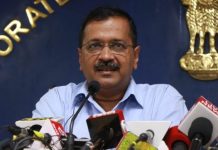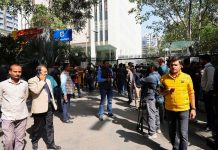When Union Railways Minister, Piyush Goyal tweeted on November 7, 2019 that “Winter is Coming and Railways is Prepared: Focusing on safety & punctuality, a host of measures including SMS updates on delay, fog safety devices & special patrolling have been put in place ahead of the fog season” it was clear that the minister is working overtime to make railway services impeccable.
Among the slew of measures that the Indian Railways has taken recently, the most noticeable is enabling it for IT related services. The Indian Railways is desperately trying to strengthen its Information Technology enablement through rollout of new online applications. Underlying idea is to ensure proper monitoring of projects being undertaken by Indian Railways and will boost the vision of Digital India.
New Rail Safety App
The three applications include the Commission of Railways Safety (CRS) Sanction, which is an important aspect in construction, maintenance and up-gradation of railway assets. The sanction of CRS is required for execution of any work on open line which will affect running of trains carrying passengers & any temporary arrangement necessary for carrying it out except in emergency. In addition to it works that require CRS sanction are opening a new line, doubling/tripling, gauge conversion etc.
An online application for CRS Sanction Management has been developed in which all works pertaining to level crossings (closure, manning, shifting etc.) and minor bridges. Further modules under development in this application are increase of speed over Turnouts & Loop Lines, inspection of new lines and doubling etc. The benefits of the project are expeditious preparation and processing of cases for CRS Sanction, effective monitoring of compliance of observations raised by the CRS, on-Line Repository of circulars/check-lists/guidelines related to CRS Sanction and managerial reports to monitor the cases, comparative performance.
Rail Road crossing
Another initiative is Rail road crossing GAD approval system. This project for online e-Governance platform was developed by Ministry of Railways and Ministry of Road Transport and Highways to expedite preparation, processing & approval of General Agreement Drawings (GADs) related to construction of Road Over Bridges (ROB)/Road Under Bridges (RUB). It has been running successfully since 2014.
Now, a module has been developed to cover cases of construction of ROBs/RUBs for States and UTs also. The benefits of the project are-accountability of Railways and State Governments/UTs is fixed to each stage for approval of proposals, better and real time coordination between the stakeholders (Railways/States) and facilitates users to get proposal status through mail and SMS at each stage. Other benefits are complete proposal is targeted to be approved in maximum of 60 days and all information related to the proposal and contact person is available within the proposal.
Another IT initiative is TMS for construction. This application has been developed for new assets being constructed by the construction/project organisation. The assets master data can now be regularly filled during the stage of construction and completion of assets, by the construction officials before itself final scrutiny and test check by the open line officials. The benefits of the project are-data validation at source, ease in data entry and correction thereof, easy checking/verification of data entry and for every data the ownership and responsibility is defined and fixed in the application design.
Trains tracker
Yet other IT initiatives are tracking of trains using newer technologies. Railways have experimented with tracking of trains using GPS devices with these GPS devices located in the locomotive. For a sustainable solution, a Real Time Train Information System (RTIS) is being implemented, whereby GPS tracking devices would communicate using satellite communications. The trials have been successful. Apart from this, data logger systems already available in track-circuited stations are being used at major interchange points to capture arrival/departure information on trains.
In an effort to computerize the transactions of the station master, a Computerized Train Signal Register is going live at 650 stations and this enables arrival/departure information to be transmitted to the Control Office Application (COA) and the National train Enquiry System (NTES) directly from the station master’s desk. Handheld Terminals (HHTs) have been provided to the Train Ticket Examiners (TTEs) to be able to check the reserved coaches, allot the vacant berths and transmit information on available berths to the subsequent stations. The HHT can also access the ticketing application and collect excess fares as per rules. The terminal can potentially connect to a Point of Sale (POS) machine and charges can be collected digitally.
Over the last four years, the capacity of the website has increased to 20,000 tickets per minute starting from 2000 tickets per minute in 2014, a ten-fold increase. Apart from the capacity, the entire user experience has been improved substantially with the launch a new interface with easier navigation and standard views that enable the passengers to transact smoothly. New features have been added that enable better planning of journeys aiding the passenger to obtain confirmed tickets.
Paperless ticketing
Unreserved ticketing on mobile phones was launched at Mumbai initially and has since been expanded to suburban sections of Mumbai, Chennai, Kolkata and Secunderabad and New Delhi-Palwal section of Northern Railway. This has eliminated the need for passengers to stand in queue for getting tickets for journey in unreserved compartments of trains. The ticket is delivered on the Mobile Phone and is embedded with QR Code. This service has added to passenger convenience. About 4 lakh passengers per day are booking tickets on Mobile phones.
E-Procurement
Complete tendering activity of Indian Railways for procurement of goods, services & works and e-auction of scrap sale is on Indian Railways E-Procurement System (IREPS). The IREPS system is largest such G to B portal in India. It has helped in achieving objectives of transparency, efficiency and improving of ease of doing business. During 2017-18, 4,44,000 e-tenders valuing more than 1,50,000 crore were issued on IREPS.
Online scrap sale of 2800 crores was also done last year through e-auction. 90,000 vendors have registered themselves on IREPS website. Central Vigilance Commission has recognized and awarded the system under “Vigilance Excellence Award — 2017” for outstanding contribution in the category of “IT initiatives for transparency in the organization”.
In another first, India’s largest employer, Indian Railways, will be using Microsoft Kaizala to connect its employees across the country with quality healthcare facilities. Microsoft Kaizala app will enable serving and retired railway employees to avail healthcare services of 125 railways and 133 private recognized hospitals. The Kaizala group, managed by doctors from South Central Railways will be complemented with focused groups of doctors, paramedical staff and nurses.
On registering for the healthcare services, Indian Railway employees will be able to search on Microsoft Kaizala, nearest hospitals and doctors, list of empaneled diagnostic centers and health units. Employees can book doctor appointments, share diagnostic lab reports directly with their doctors and save digital records in ‘Me Chat’ of Microsoft Kaizala.
Kaizala enables Indian Railways to enable direct communication with their employees including achievement bulletins, educative bulletins and informative bulletins to spread awareness around CPR, general first aid, immunization and vaccination, including others. The doctors on this Kaizala group can view medical history of an employee, pull out case sheets and aid in taking timely decisions. Microsoft Kaizala is a mobile-only product that makes it simple for organizations to seamlessly communicate, collaborate and complete tasks, bringing together desktop users and mobile-only users.
Improved lighting
Besides the IT initiatives, the Indian Railways’ North East Frontier Railway (NFR) zone has taken steps to improve the lighting in the interior of the railway coaches. As a part of its up gradation process, NFR has initiated a drive for replacement of existing incandescent lamps and CFL lights inside coaches by LED lights. According to a statement, the step will help Indian Railways, to cut on its energy bill and also the inside of the coaches will also get brightly illuminated.
A total of 1890 passengers’ coaches have been retrofitted with LED lights so far and entire stock of coaches will be done within the next one year.
The initiative is part of the planning of Indian Railways for improvement of the travelling experience of the passengers and is being done in tandem with other initiatives for improving the coaches’ interior to ensure more comfort.
According to the statement the existing tube lights have limitation in brightness and there is uneven distribution of light. Besides there are problems of accumulation of dust particles, which results in poor, lightening. In order to overcome this limitation, energy efficient LED based light has been introduced which are brighter and can be conveniently used in 100 volts D.C.Energy saving of up to 40% is possible by using of LED lights.
NF Railway has already replaced conventional lighting in all its stations with LED lights in all its stations. Besides at important stations like Guwahati, Dibrugarh, New Cooch Behar, New Jalpaiguri, Kathihar and Rangiya the Lux levels of lights have been improved to airport standard lighting.
Tie up with Amazon
In another initiative, the Indian Railways in a bid to increase its revenue from non-fare sources has decided to ship e-commerce consignments in non-peak hours. The Indian Railways has decided to start it on a pilot project on its Eastern Railways Zone. It carried out the trial runs from Sealdah to Dankuni. According to a statement the project will be carried out for a period of three months initially. The pilot project is initially for a period of three months where total 7 MT of consignment per day has been allowed to be carried in the trains. The consignment is allowed to be carried in vendor compartment along with other vendors in non-peak hours thus causing no disruption/inconvenience to the existing system.
The project is to benefit both Railways and e-commerce company Amazon.
Indian Railways is expecting that it will be able to generate additional revenue without putting any extra stress or burden on an existing system whereas Amazon will be benefitted through reduced transit time. Amazon preferred the route from Sealdah to Dankuni for quick movement of their consignment to the existing facility at Dankuni.
The railways will be benefitted through generation of revenue, without putting any additional stress or burden on the existing system, whereas Amazon will be benefitted through a reduced transit time. Upon success of the pilot project, other routes may also be taken up by Amazon and other e-commerce companies to have the benefit of penetration and quick transit time from Kolkata suburban Railway to suburban area of Kolkata.
letters@tehelka.com













